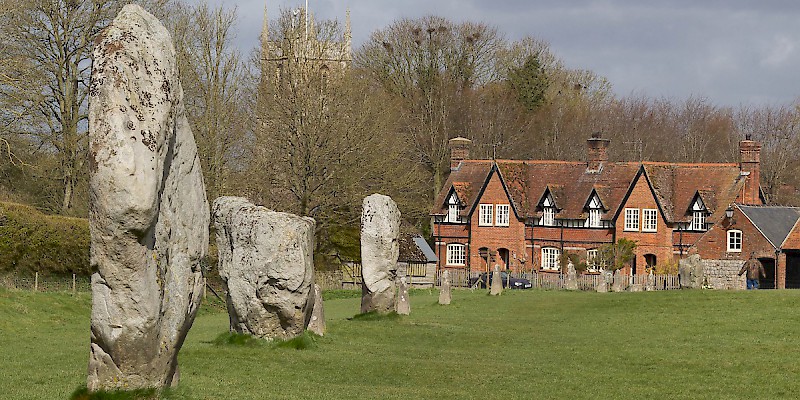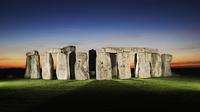Avebury stone circle ★★★

An ancient stone circle curled around a medieval hamlet
Stonehenge is spectacular, but Avebury is way cooler.
Sure, the stone circle at Avebury is not nearly as intact, but it is far, far larger—enclosing an area of 28.5 acres (11.5 hectares)—and while it is difficult to get inside the stone circle of Stonehenge, Avebury incorporates an entire medieval hamlet in its midst.
You can sit there sipping a pint at the Red Lion with a view out the window at sheep grazing scenically next to the stone monoliths erected between 2850 BC and 2200 BC. There's even a small hotel within the circle.
Many of Avebury's standing sarsen stones remain—some re-erected and many medieval buildings cleared away in the 1930s under the auspices of marmalade heir Alexander Keiller—and the many of the missing stones have been replaced by smaller concrete pillars to give a better sense of the overall pattern.
Avebury was actually a complex consisting of a Neolithic henge surrounding the largest stone circle in England, originally made up of around 100 standing stones.
What is a henge? Think of it like an early version of a moat, consisting an artificial bank of blindingly white chalk—once nearly 55 feet (17m) high, now covered in grass and about 14–18 feet (4.2–5.4m)—rising above the ditch dug to make it (originally 30 feet/9m deep). It had—and still has—four entrances for the roads to pass through.
Within that henge and its stone sub-circle were two smaller stone circles. The more southerly one once had 29 stones set regularly 39 feet (11m) apart around a great Obelisk, a 21-foot (6.4m) monolith removed in 1725. The northerly one had 27 stones also set 26 feet (11m) apart.
At the center are three rectangular sarsen stones forming three sides to a square, with an opening (the fourth side) facing north. This is known as the Cove—or, more fancifully, as the Devil’s Brandirons.
There is also the Alexander Keiller Museum, split between two spaces: the stone Stables Gallery with artifacts gathered by Mr. Keiller—Neolithic pottery, 4,00-year-old stone tools, and ancient animal skeletons—and the Barn Gallery, a 17C threshing barn with interactive exhibits aimed at the family, including Bronze-Age dress-up and a chance to do archaeological rubbings.
On the south edge of town, don't miss monoliths of West Kennet Avenue, which lead toward yet another stone circle south of town called the Sanctuary (now vanished, but with modern markers to show the layout).





















